How to Start Your Own Shrimp Farm
Have you ever considered starting your own shrimp farm? It can be a really rewarding venture for people who are interested in aquaculture. Shrimp is in high demand all over the world, so if you plan carefully and take the right steps, you can create a successful farm of your own. In this article, I’m going to show you how to start your very own shrimp farming business. Let’s get started!
Contents
- 1 What Exactly is a Shrimp Farm?
- 2 How I Can Start an Indoor Shrimp Farming Business in 6 Simple Steps
- 3 What’s Happening in the Shrimp Farming Industry Today
- 4 Why You Might Want to Consider Becoming a Shrimp Farmer
- 5 Shrimp Species in the United States
- 6 Shrimp Production Methods
- 7 Choosing the Perfect Spot for Your Shrimp Farm
- 8 Must-Have Equipment for Your Shrimp Farm
- 9 Creating a Plan for Sustainable Shrimp Farming
- 10 Selling Your Shrimp to the World
- 11 Keeping Your Shrimp Farm Healthy and Growing
- 12 Frequently Asked Questions
What Exactly is a Shrimp Farm?
A shrimp farm, also known as shrimp aquaculture, is a place where shrimp are grown and cared for in a controlled environment.
This is done by breeding and raising shrimp species, like the Pacific white shrimp, in specially designed ponds or tanks.
When it comes to shrimp farming, it’s important to prioritize sustainable production. This means making sure the water quality is good, preventing diseases, and considering the impact on the environment.
Shrimp farms are actually really important because they help meet the global demand for shrimp.
How I Can Start an Indoor Shrimp Farming Business in 6 Simple Steps
Are you ready to dive into the world of indoor shrimp farming? Follow these six straightforward steps to get your business up and running.
Whether you’re starting from scratch or already have some experience, these guidelines will help you build a successful venture. Let’s dive in and learn how to start a shrimp farm:
Step 1: Make a Business Plan
The first step is to create a thorough business plan for your farm. This plan should outline your goals, target market, and financial projections. Take the time to assess the feasibility of your venture and research the market demand for shrimp. A solid plan will lay the foundation for a successful indoor shrimp farming business.
Step 2: Create the Perfect Infrastructure
To create a good environment for shrimp farming, I need tanks or ponds, filtration systems, and temperature control. These things will help me maintain the right conditions for shrimp to grow and reproduce while keeping my farm sustainable and efficient.
3. Choose the Right Shrimp Species
When selecting the shrimp species for my farm, I should consider what people want to buy, how compatible they are with my setup, and what I want to achieve with my farming. It’s important to think about things like how fast they grow, how resistant they are to diseases, and how valuable they are in the market.
4. Get Healthy Shrimp Stock
I should get my shrimp postlarvae from trusted hatcheries to ensure they are healthy. It’s also important to make sure they are transported properly, acclimated to their new environment, and quarantined to prevent diseases and maintain the quality of my stock.
5. Follow Feeding and Management Protocols
When it comes to taking care of your shrimp, there are a few important things to keep in mind. First, it’s essential to establish a feeding schedule and make sure they’re getting the right nutrients. This will help them grow and stay healthy. I’ll also need to regularly monitor the water quality to ensure it’s just right for the shrimp. It’s also important to take steps to prevent diseases and follow best practices for their overall growth and well-being.
Step 6: Harvesting and Selling Your Shrimp
Once the shrimp have grown to the right size, it’s time to harvest them. I’ll need to carefully plan and carry out this process to make sure they’re ready for the market. It’s important to sell them when they reach the desired size to maximize profits. To make sure I get the most out of my shrimp farming business, I’ll also need to develop marketing strategies to promote my sustainably farmed shrimp and find profitable sales channels.
What’s Happening in the Shrimp Farming Industry Today
The shrimp farming industry is growing rapidly on a global scale. In fact, experts predict that the market will reach a staggering $69.35 billion by 2028. The demand for frozen shrimp plays a big role in this growth. Shrimp is popular in various industries, including food, pharmaceuticals, healthcare, and cosmetics. This means there’s a lot of potential for success in the shrimp farming industry.
But wait! Did you know that shrimp farming can have some negative effects on the environment? Yep, according to the United Nations Food and Agriculture Organization (FAO), there are risks involved in shrimp production.
Why You Might Want to Consider Becoming a Shrimp Farmer
Hey, ever thought about becoming a shrimp farmer? It could be a pretty awesome choice if you’re looking for a rewarding and profitable venture.
- Demand is through the roof: People all around the world absolutely love shrimp, which means there’s a big market for shrimp farmers. Ka-ching!
- Doing it the right way: The cool thing about shrimp farming is that it can be done in a responsible and sustainable way. That means less harm to the environment. Nice!
- Money, money, money: Shrimp farming has the potential to make you some serious cash. With high market prices and efficient production techniques, the profits can really add up. Cha-ching!
- Starting a shrimp farm: I want to let you know that starting a shrimp farm can be pretty simple if you plan well and get the right guidance. This means that even if you’re just starting out as an entrepreneur, it’s something you can do!
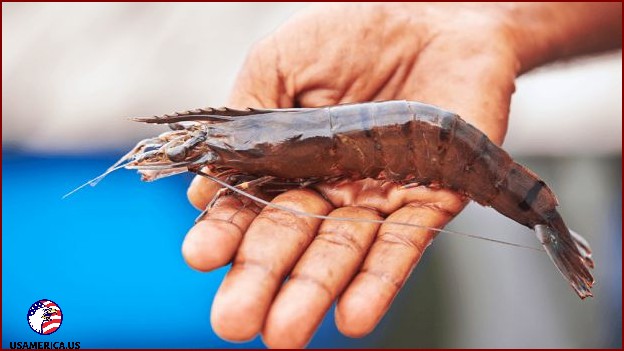
Shrimp Species in the United States
When it comes to different kinds of shrimp, we have a wide variety here in the United States. Some live in the wild, while others are raised on farms.
- Marine Shrimp: We commonly call these shrimp white shrimp or pink shrimp. They are found in coastal areas and are known for their delicate flavor and how well they can be used in cooking.
- Giant Tiger Prawn: Another name for these shrimp is black tiger shrimp. Originally from Asia, they are now raised on farms in the U.S. These impressive creatures are known for their size and the tiger-like stripes on their shells. They have a sweet and juicy taste.
- Freshwater Prawns: These prawns live in freshwater habitats and are larger than regular shrimp. They have a firm texture and a slightly sweet taste. People love them because they work well in many different dishes.
I want to tell you about some different types of shrimp I learned about. First, there’s the Blue Shrimp. These shrimps are usually found in the Gulf of Mexico, and what’s interesting about them is that they have a bright blue color. They also have a mild, slightly sweet taste, which is why many people consider them a fancy food.
Next up, we have the Brown Shrimp. You can find these shrimps along the Atlantic and Gulf coasts. They have a strong, robust flavor and a firm texture. Because of this, they work well in many different recipes and cooking methods.
Now, let me tell you about the Pink Shrimp. These shrimps are mostly found in the Gulf of Mexico. They have a delicate flavor and a tender texture. This makes the Pink Shrimp very versatile in cooking – you can use them in many different dishes!
Finally, we have the Rock Shrimp. These shrimps have a really hard shell, like a rock. They are known for their sweet taste and their firm meat, which is similar to lobster. People usually catch them off the southeastern coast of the United States.
So, there you have it – four unique types of shrimp, each with their own special qualities and flavors. I hope you found this information interesting!
I want to tell you about two types of shrimp: Royal Red Shrimp and White Shrimp. Royal Red Shrimp are found in the deep sea off the southeastern coast of the U.S. They have a special taste that is described as sweet, succulent, and similar to lobster. On the other hand, White Shrimp can be found in many places along the Atlantic and Gulf coasts. They have a mild and slightly sweet flavor, which makes them a favorite for many different recipes.
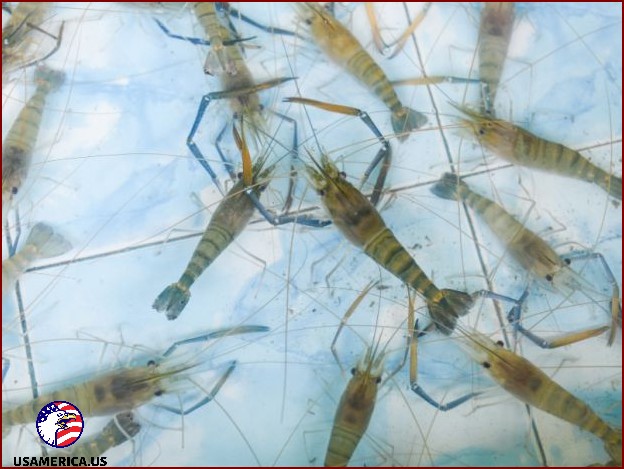
Shrimp Production Methods
When it comes to making shrimp, there are different ways we do it to keep up with the high demand for this tasty seafood.
Each way of making shrimp has its own pros and cons, like how much shrimp we can make, how good it is for the environment, and how we manage the water.
- Pond Culture: The most common way is to grow shrimp in big ponds, where they can grow and have babies in a natural or controlled environment.
- Raceway Systems: Another way is to raise shrimp in special channels called raceways. The water flows fast in these channels, which helps keep it clean and gets rid of waste easily.
- Biofloc Technology: With biofloc technology, we can make shrimp ponds even better! We encourage the growth of helpful microorganisms that create a special system called a biofloc. This helps keep the water clean and also provides extra food for the shrimp.
- Recirculating Aquaculture Systems: Let’s talk about closed-loop systems for raising shrimp. Instead of using a lot of new water, we filter and recycle the same water over and over again. This saves water and helps protect the environment.
- Integrated Multi-Trophic Aquaculture: Here’s a cool idea: combining shrimp farming with other species like fish or algae. When we do this, it creates a special ecosystem where the waste from one species becomes food for the others. It’s like a big circle of life!
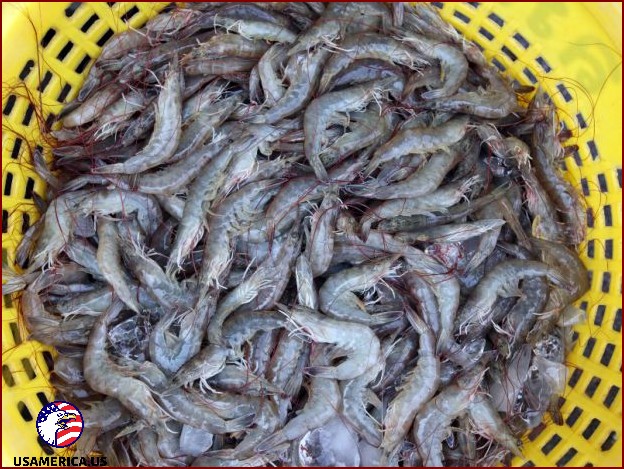
Choosing the Perfect Spot for Your Shrimp Farm
When I’m deciding on the ideal location for my shrimp farm, I think about a few key things. First off, the water quality is super important. Shrimp need clean and well-oxygenated water to thrive, so that’s a big factor for me.
Another thing I consider is how close my farm will be to markets. Being near markets helps with getting my shrimp out there efficiently and also reduces transportation costs, which is always a plus.
I also take a good look at the land itself and check if it’s actually suitable for farming. It’s important to have access to electricity and freshwater sources, so I factor that in as well.
Lastly, I consider the climate conditions of the area. Temperature and rainfall patterns play a big role in shrimp growth and preventing diseases. So, I make sure to choose a spot with optimal conditions for my shrimp.
Must-Have Equipment for Your Shrimp Farm
In order to take care of shrimp and help them grow successfully, I need to have certain tools and equipment. Let me show you the important items I’ll need and why they are necessary:
1. Pond Aeration System: Shrimp need oxygen to breathe, just like we do. A pond aeration system is like a supply of fresh air for them underwater. It makes sure there’s enough oxygen in the water for the shrimp to stay healthy and grow properly. Without it, the shrimp could get sick or even die. That’s why a reliable aeration system is so important.
2. Water Pump: Keeping the water in the pond clean and moving is important for the shrimp’s well-being. An efficient water pump helps with that. It circulates the water, preventing it from becoming stagnant. Stagnant water can be bad for the shrimp because it can lead to the buildup of waste and harmful substances. The water pump also helps to remove waste materials from the pond, keeping it clean and ensuring good water quality.
3. Shrimp Net: Sometimes, I’ll need to move the shrimp from one pond to another, or transfer them into containers. A shrimp net is a special net designed just for that. It helps me catch the shrimp without hurting them and allows for an efficient and safe harvest. With the shrimp net, I can handle the shrimp carefully and make sure they are moved without any harm.
4. Water Testing Kit: Shrimp need to live in the right environment in order to thrive. Regularly testing the water is an important part of making sure their environment is ideal for their growth. A comprehensive water testing kit is a tool that helps me monitor and adjust important water parameters. It allows me to check factors like pH levels, ammonia levels, and temperature. By knowing and controlling these factors, I can create the best conditions for the shrimp to grow and stay healthy.
So, these are the essential tools and equipment I need to take care of my shrimp properly. With the pond aeration system, water pump, shrimp net, and water testing kit, I can ensure that my shrimp have the best possible environment for healthy growth.
When it comes to shrimp farming, there are a few key tools and equipment that are important for ensuring successful growth and development. Let me tell you about them.
First, we have feeding equipment. Automatic feeders or feeding trays are crucial for making sure that shrimp are getting the right amount of food at the right time. This not only helps optimize their nutrition intake but also reduces wastage.
Next up are shrimp grading tools. These handy tools, like grading sieves or trays, are used to separate shrimp based on their size. By doing this, we ensure that all the shrimp are growing at a similar rate, which is important for market grading purposes.
Another essential piece of equipment is the water filtration system. This system helps keep the water clean and free from impurities, sediment, and excessive nutrients. By maintaining favorable water conditions, we create a healthy environment for the shrimp to thrive in.
Last but not least, we have the shrimp tanks or ponds. These serve as the main infrastructure for shrimp farming. They provide a suitable habitat for the shrimp to grow and reproduce under controlled conditions. It’s like creating a cozy home for them!
So, there you have it. These tools and equipment are vital for successful shrimp farming. They help ensure that the shrimp receive proper nutrition, grow at a similar rate, and have a clean and comfortable living environment.
- Water Temperature Control: Depending on where you live and the weather, you might need a system to heat or cool the water to just the right temperature for the shrimp to grow.
- Tools to Keep Shrimp Healthy: There are things you can use, like cleaning products, good bacteria, and medicine, to make sure the shrimp don’t get sick or to help them get better if they do.
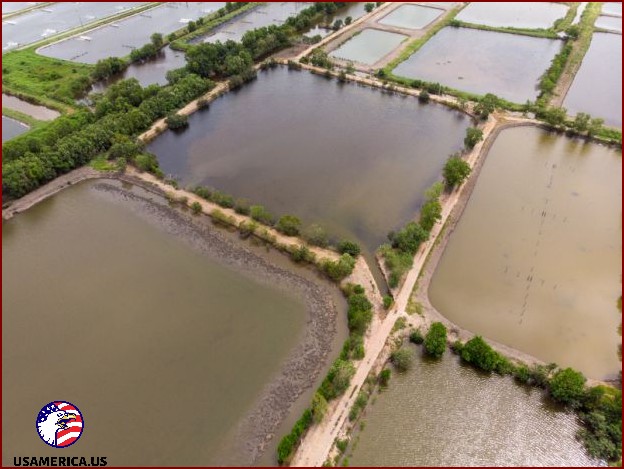
Creating a Plan for Sustainable Shrimp Farming
I want to talk about how we can make shrimp farming more sustainable. There are some really cool techniques we can use that are good for the environment and for the shrimp themselves. Let’s dive in!
Bio-friendly Practices: One important thing we can do is use organic feeds instead of harmful chemicals. These organic feeds are better for the shrimp and for the environment. We can also implement energy-efficient systems that use less power and reduce our ecological impact. These practices not only help the environment but also keep the shrimp healthy and happy.
Taking Care of the Water: Water quality is super important in shrimp farming. We need to regularly test the water and make sure it’s clean and healthy for the shrimp. It’s also important to use efficient filtration systems to clean the water and conserve water whenever possible. By managing the water well, we can support the shrimp’s growth and make sure our farm has a smaller impact on the environment.
Selling Your Shrimp to the World
When it comes to finding your customers, it’s not just about knowing who they are. You also need to know how to reach them, get their attention, and make them loyal fans of your products.
Finding the Right Customers
- Local or Global Markets: Figure out if it’s better to focus on selling in your local area or if there are opportunities in global markets. You could sell fresh shrimp to local restaurants and markets, or think about exporting frozen or processed shrimp to other countries.
- Niche Markets: Find special groups of people who are looking for specific qualities in their shrimp, like organic or sustainably farmed. This might include health-conscious consumers or fancy restaurants that appreciate high-quality ingredients.
I can help you with that! Here’s a rewrite of the text, maintaining the original HTML markup:
- Market Research: I recommend doing some market research to understand what your target audience likes and how they buy things. You can do surveys, talk to focus groups, or look at market trends.
Creating Great Marketing Strategies
- Branding: It’s important to have a strong brand for your shrimp farm. That means having a logo that people will remember, a story about your farm that people will find compelling, and consistent messages that show your farm values and the high quality of your shrimp.
- Digital Marketing: You should use digital marketing tools to promote your shrimp farm. This could include having a professional website, using social media platforms, and sending emails to customers. You can share interesting things like tours of your farm, testimonials from happy customers, and educational pieces about why your shrimp is so good.
I hope this helps! Let me know if there’s anything else I can do for you.
How to Sell and Get Our Shrimp Out There
- Selling Directly: We should consider selling our shrimp directly to consumers through subscription boxes, online orders, or farm stand sales. This way, we can make more profit and have a direct relationship with our customers.
- Distributing to Stores: We can partner with wholesalers or distributors to get our shrimp in more places. Let’s negotiate good terms and make sure they share our values and quality standards.
- Diversification of Products: Instead of just selling plain shrimp, try offering different types of shrimp products such as marinated shrimp, ready-to-cook meals, or shrimp-based snacks. This way, you can attract a wider range of customers and generate more income from different sources.
Promotion and Customer Engagement
- Promotional Offers: Come up with special deals and promotions like discounts, seasonal offers, or referral programs. These will help you attract new customers and keep the existing ones coming back for more.
- Customer Engagement: Stay connected with your customers by regularly sharing updates, sending newsletters, or interacting with them on social media. Encourage them to give feedback so that you can improve your products and services based on their input.
Keeping Your Shrimp Farm Healthy and Growing
Taking care of your shrimp farm is really important if you want it to be successful. This means cleaning the ponds regularly, making sure all the equipment is in good shape, and keeping an eye on the health of your shrimp. When you put effort into maintaining your farm, you not only get high-quality shrimp, but you also reduce the risk of diseases and cut down on any losses you might have.
It’s also a good idea to plan ahead for the future of your shrimp farm. You might want to think about making your ponds bigger, trying out different kinds of shrimp, or even adding other types of fish or plants to your farm. But remember, expanding your operation takes time, money, and planning. So make sure you consider all the financial and logistical stuff before you go ahead. It’s all about finding the right balance and making sure your farm can grow in a sustainable way.
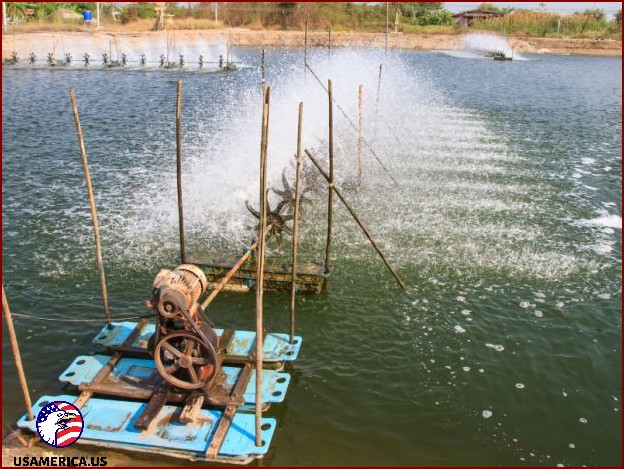
Frequently Asked Questions
How much does it cost to start a shrimp farm business?
Starting a shrimp farm business can cost anywhere from $10,000 to $200,000. The total amount you’ll need depends on how big you want your farm to be and how much shrimp you plan on producing.
How long does it take to grow farmed shrimp?
The time it takes for farmed shrimp to grow can vary. It usually takes about 4 to 6 months for them to reach a size that is ready to be sold. However, this can change depending on the type of shrimp, the temperature of the water, how much they’re fed, and how big you want them to be at harvest.
Where are the best places in the U.S. for shrimp farms?
The Gulf Coast is a popular spot for shrimp farms. Texas, Louisiana, Mississippi, and Alabama are the best states to start a shrimp farm because they have a great climate and plenty of water resources. Other places like parts of Florida, South Carolina, and Hawaii also have potential for shrimp farming.
How much money can you make as a shrimp farmer?
Shrimp farm owners can make anywhere from $35,000 to over $150,000 per year, depending on the size and scale of their farm. Some shrimp farms even find ways to make more money. For example, you could also learn how to start catfish farming to increase your profits.
